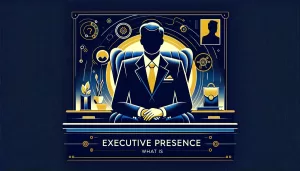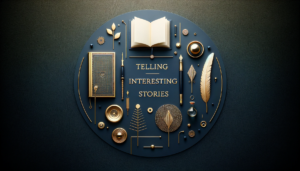Storytelling for personal branding is a great method to leverage any brand since it conveys emotion and information in a naturally digestible manner.
Cognitively speaking, it is a very effective way to send a message and get the reaction you need from whoever you speak to.
A good story can improve your image by making a clear notion of your identity, your work ethic, your values, your thought process, and your achievements.
In marketing, stories make the difference between a generic sales pitch and a purposeful connection to anyone. They help us stand out in the crowd.
Every doctor wants to heal their patients, every lawyer wants justice, every chef probably loves food.
But how does one particular person prove how their passion or capacity can help with someone else’s problems? Regardless if you are talking to the team in your company, to investors, or your clients.
A key example of storytelling for personal branding is in politics, since a large portion of their ability to get a job relies on being known and people connecting to them.
However, these are amazing tools to work within any environment. And the impact they can have in any personal branding process is invaluable.
Stories shape the way we perceive the world, from other humans to nature and history. Hence, they are the perfect mechanism to inspire someone to believe in you.
As the German philosopher, Hannah Arendt said: “Storytelling reveals meaning without committing the error of defining it.”
In this article you will find:
- Elements of storytelling for personal branding.
- How to craft a good core message.
- Some of the different types of stories there are.
- How humility and emotion make better stories.
- How to face the fears of putting yourself out there and tell your stories.
Contents
- 1 What Does a Good Story for Your Personal Brand Need?
- 2 How To Craft Your Core Message in Storytelling for Personal Brand
- 3 Types of Stories for Personal Branding
- 4 Humility And Emotion: Two Key Components Of A Great Personal Story
- 5 How To Put Yourself Out There: Be The Protagonist of Your Story
- 6 When Am I Telling Too Much?
- 7 Use Storytelling for Personal Branding to Show What You Are Capable of
What Does a Good Story for Your Personal Brand Need?
Storytelling for personal branding requires you to structure and develop stories.
Some of the elements that any story should have are:
Beginning, Middle, Ending
This is the basic structure in any story. In the beginning, you present the characters and the context (time and setting).
In the middle, you present the main conflict, the obstacles that need to be overcome, any problem, and the process to solve them.
The ending shows the conclusion, how everything was finally solved, and what was the takeaway from the experience.
Conflict
There is no story without conflict. It is what makes your audience be invested in the tale.
The conflict is the starting point of any resolution, and it tells us what is the problem that needs to be addressed, the obstacles we need to surpass, or the situation that needs to change.
The Core Message
A strategic part of crafting a story that is meant to support a brand is asking “what do I want people to take away from this?”. The core message is the answer to that.
When talking about a personal brand, these are some of the things someone might want to communicate:
- “These are my values”.
- “This is how I work”.
- “This is how I think”.
- “This is where I come from”.
- “This is what I believe in”.
Tone
When speaking of tone, we refer not to what you are saying, but how you are saying it.
The vocabulary, the cadence, the feeling or emotion, are all part of the delivery of any story.
There is a difference in how you tell an uplifting and inspirational story and how you tell a sad story.
Characters
The characters move and influence the events of the story.
They are the ones that make it human, which is vital to form the connection we want with the audience.
Of course, in a story for your personal brand, one of the main characters has to be no one other than yourself!
How To Craft Your Core Message in Storytelling for Personal Brand
The main takeaway is to know what your story is supposed to tell. Every story is different, and every industry resolves different problems.
When building a personal brand, the same question may arise.
Determining what you want to say and achieve with your brand is not a task that is meant to be taken lightly.
Taking into consideration that the goal of a discovery process is to create a foundation on what you know about yourself and your audience to maximize the probability of alignment.
Surely, an important part of the process.
If you want to learn more about the discovery process of a personal brand check out our article on “How To Become A Thought Leader In Your Niche”.
The idea is that you choose what you want to leave in other people’s heads about yourself and what you do. When you keep that in mind, the work of writing your story gets easier.
These are some examples in storytelling for personal branding: how you can solve the problem or fill the hole in your niche, how you are the best candidate, what sets you apart, what do you stand for, what have you achieved.
Also, it is important to consider what is the “Call To Action” (or CTA) in your message.
A CTA is what you suggest people do with the information presented in the story. It is how the audience can get involved with you and your mission.
There are different kinds of “Call To Actions”, one might be focused on yourself and one might be centered around your audience.
There is a difference in telling your audience to “follow you on social media” or “buy your product”, and “trust yourself” or “get out of your comfort zone”.
In both cases you are suggesting people what to do, based on what you told them in your story. However, in one there is a personal interest and in another there is a selfless interest.
Both kinds are great resources. However, only you know when one type comes best over the other.
Tip:
If you are looking for investment, then your message should contain why people should invest in you.
If you are searching for followers, then tell your audience why they should follow you on any social media.
If you want to inspire your team to improve on any aspect, tell them about how they can do so through your experience.
Types of Stories for Personal Branding
1. Who Am I? Where Do I Come From?
This is a good story to sum up some basic facts about yourself. It can be a great introductory story to put in your bio, to post it in the homepage of your website or even share it with people you are introducing yourself to.
You can tell the story of why you are a lawyer, or a manager in your firm. How you got to where you are. What inspired you to become today’s version of yourself.
Bonus: In this story, you can naturally point out what you do professionally, where you graduated from or what city/country you are originally from.
2. Overcoming a Challenge
This is a great story to tell to anyone who needs some convincing of how capable you are to overcome an obstacle, or to someone who might need inspiration.
Tell the story of how a problem was presented to you, how that affected you and how you managed to conquer the challenge!
These stories work great to showcase skills like creative problem solving and temperance.
3. “My Identity Doesn’t Define Me, It Strengthens Me”
As the name says, this story lets people know how you use your identity to your advantage.
In this day and age, identity has a special role in making connections with people.
This type of story might require putting yourself out there and getting used to being a little vulnerable, but it can also be one of the most inspiring and moving tales.
Let people know how your gender, your identity, your race or nationality did not stop you from getting to where you are.
On the other hand, tell how it can be a source of strength and different perspectives!
A lot of people will appreciate the authenticity and others will certainly appreciate having someone they can admire and be inspired by.
4. The Reluctant Hero
The reluctant hero is an archetype where a very regular person is thrown to special circumstances that force them to grow and become a hero.
This story might also refer to a special person who is compelled to use their powers in a way that they did not expect to use them in order to survive or become a hero.
Both variations can be great to showcase how interested you are in being present in a certain moment to solve a certain issue.
We can see this speech frequently with politicians, but they are not limited to this job.
Just make sure to not sound arrogant!
Tip: Rehearse and test your stories with different friends, family members, clients or colleagues to know how they react and to get input. This applies with any kind of story you make.
5. Why Am I Here
The “Why am I here?” story centers around a problem and why you feel compelled to solve it. It also explains why people should care about that problem too.
This is a great story to shine a light on an issue you’re fighting against.
It also does not require the same level of vulnerability of other types of stories, since it focuses mostly on the problem.
It can be a great way to showcase why something is important to address and how you, your service or your product can help to solve it.
6. The Visionary Story
The “Visionary” story describes a future where something that is yet not possible is achieved.
This is a story often used by many inspiring leaders fighting daily injustices, or tech visionaries who believe in a more innovative and advanced world.
It works very well to set the audience in a headspace where they enjoy something that they currently do not have access to, and tells the people how they can get there.
Humility And Emotion: Two Key Components Of A Great Personal Story
It is important to keep the message purposeful and humble.
You are not creating a story to just state your resume or to exalt yourself. People want approachability and trust.
Your message is meant to speak for you, your actions too. That should be the main focus.
Having said this, you should stay away from two things:
- Using too many adjectives to describe your abilities, let people create a judgment from your decisions, your actions and the course of the story you prepared.
- Stating achievements that do not fit organically into the story. Make sure that what you say has a purpose. The idea is to inspire people, not to build ego and brag.
Another key component in every story is emotion since it keeps people invested and creates a feeling of connection.
This is the best way to influence and motivate people to keep listening and even hire you, follow you, or get what you offer. Tap into what makes us human, and make people feel something with what you say.
How To Put Yourself Out There: Be The Protagonist of Your Story
One of the most important aspects of any story is the characters. They are the ones that the audience or readers can connect with. Also, they move the story and solve the conflict with their actions.
This is why you should take advantage of becoming the protagonist in your own stories. Take the chance to let people connect with you and your experience.
You never know how what you say can help you and those who get to read or listen.
At first, exposing yourself can be intimidating, but the rewards of sharing your stories are immeasurable. Setting yourself apart is a work of bravery and authenticity.
And remember, you are in control of what you share and how you share it.
As author Isak Dinesen once said: “To be a person is to have a story to tell.”
When Am I Telling Too Much?
One of the best answers for this has been given by Art Spikol, president of Art Spikol Inc.:
“Don’t tell too much. Don’t tell exactly what happened.
Exercise a little discretion; decide what’s necessary and what isn’t.
The sign of a good researcher, some might say, is getting all the facts, but the sign of a good writer is selecting only the ones that are going to help the piece.”
We get it, putting ourselves out there can be hard enough. Where do we set the limit of how much we want to share?
In summary, the answer is: You decide! The great part of telling your stories is that it is yours. Just make sure that what you include has a purpose.
Use Storytelling for Personal Branding to Show What You Are Capable of
To convince anyone about your strengths or just to introduce yourself and your philosophy, a story is one of the best resources.
This is why storytelling for personal branding is a solid way to communicate and shine a light on the things you want to let people know about you and what you can offer.
Stories are very good at reaching the emotional part of people, which can make them more likely to trust you and your brand with whatever problem that your product or service can solve.
Depending on your personality, taking the first step can be daunting, but it is worth it.
At the end of the day, all stories have a purpose. Make it your job to find one and strategically craft your tale to spread the message you want to get across.
If you want to keep learning about how to develop your personal brand, or even if you need help with figuring out your message, make sure you book a call with us to see how we can support you on your journey.





